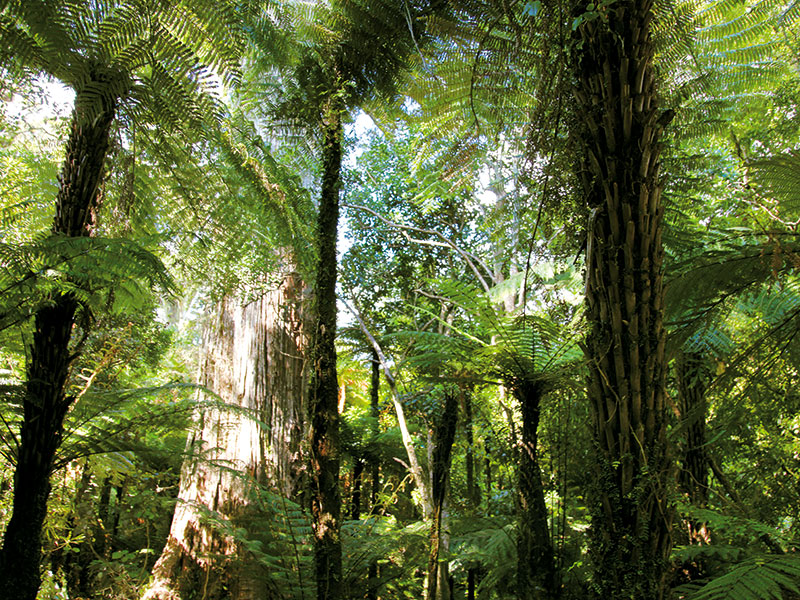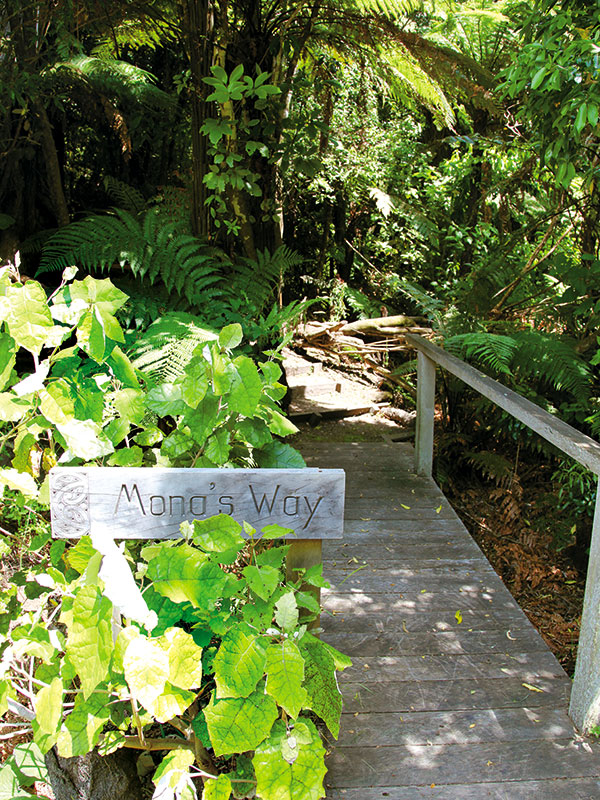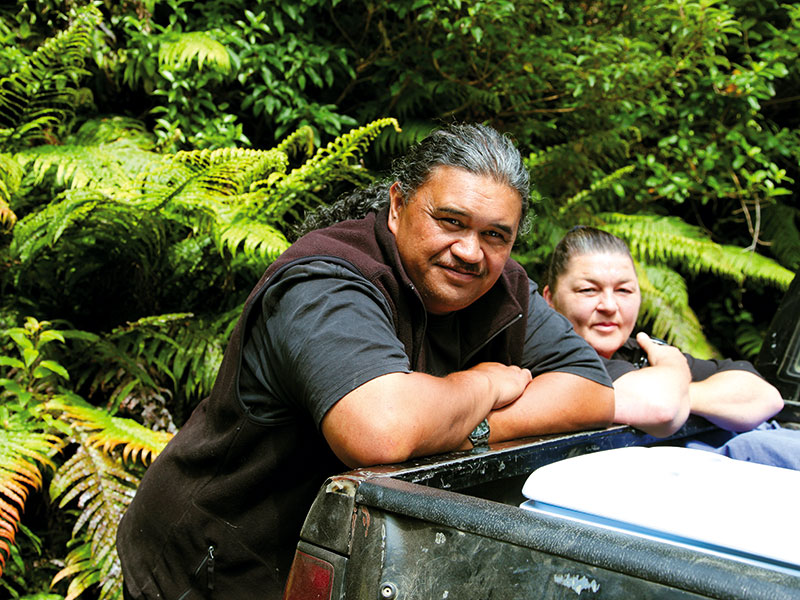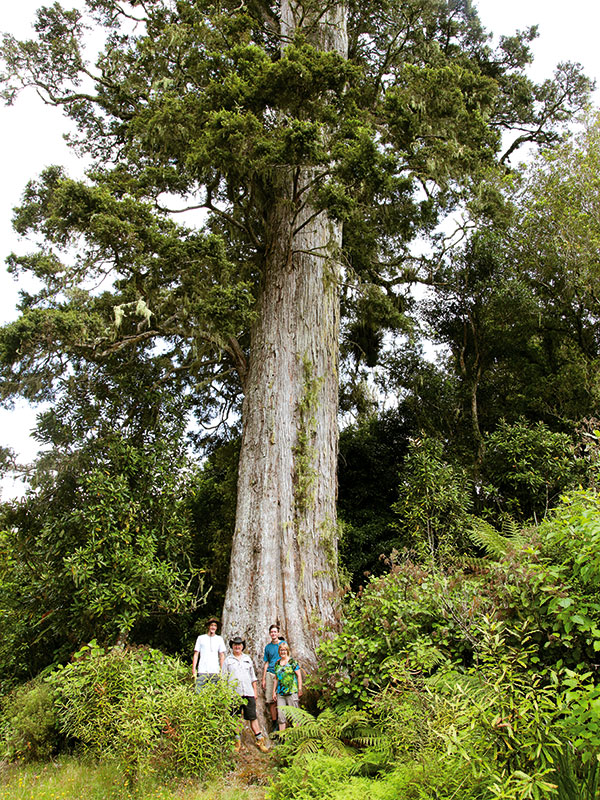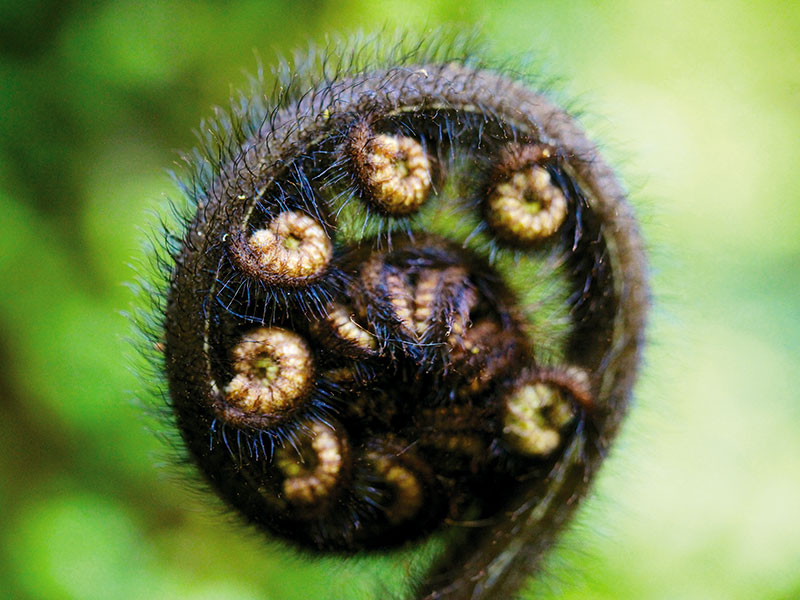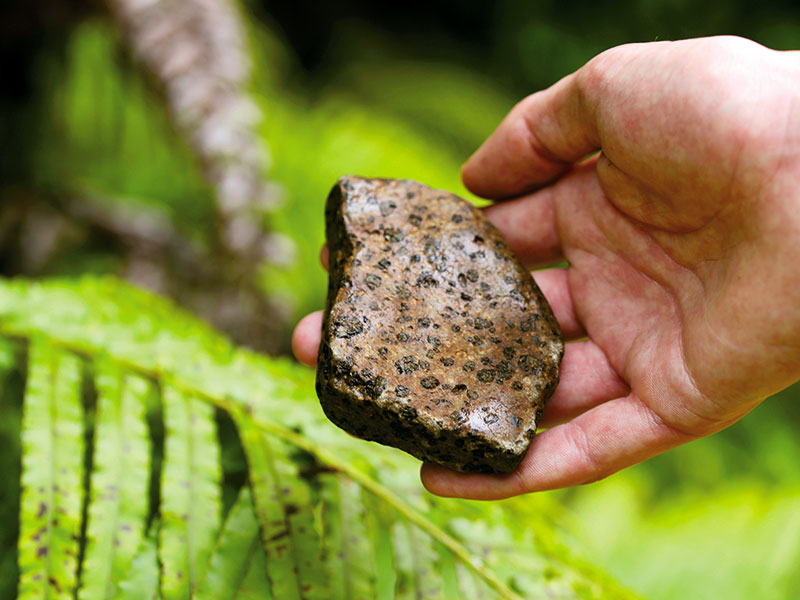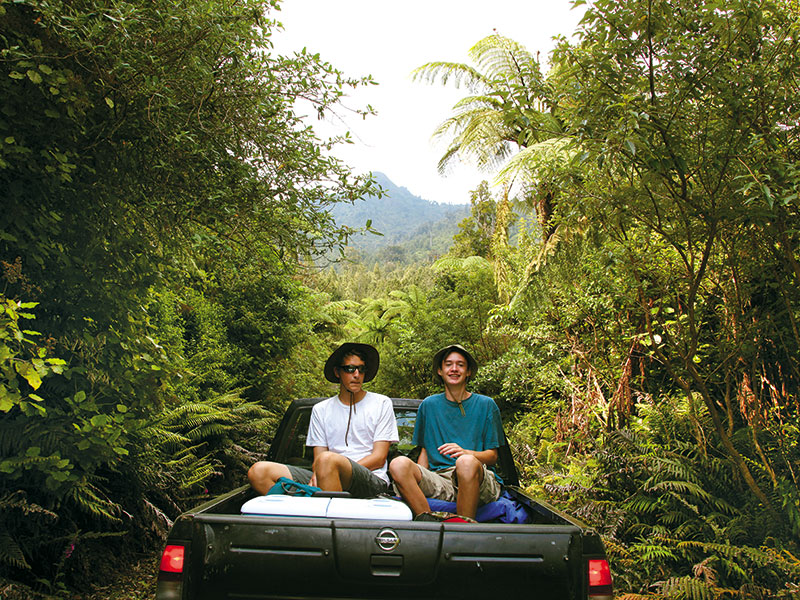As we progress up a wide path via four-wheel drive to begin our Awhina Wilderness Experience, I reflect on how ironic it is that the former logging trail used by loggers, now enables visitors like us to explore the slopes of Mt Titiraupenga, 30 kilometres from Taupo.
I kept glancing nervously at the mountain with its bent finger of a summit jutting skywards, hoping we didn't have to hike all the way up there.
Any fears are dispelled at the sight of our smiling hosts and tour guides, Mariata Couch and John Paki, as they warmly welcomed us. Two sisters from the UK, who have stayed overnight at Awhina's farm stay, are just leaving and as they bid farewell, their happy faces reflect what a great time they'd had.
Mt Titiraupenga
Mariata tells us that Mt Titiraupenga is a sacred mountain and certain parts, including those nearer the summit are tapu. "Titiraupenga is a being, so we respect that. He is very sacred to Maori and because the mountain has been used for sacred purposes, there are places we don't access."
Awhina Wilderness Tours was born after a dream that John's father, John Paki senior, had about sharing the natural beauty of the land with others. It took 20 years of legal battles for the Pouakani people, to have the their land returned by the Crown. When this happened 14 years ago, the Pouakani Trust was created, and the dream began to take shape. John and Mariata have been running these tours since 2009.
John tells us some of the Maori mythology here: "Mt Titiraupenga and Mt Pureora are brother and sister. When Pureora became ill, her ember started to burn low in her heart. Her brother became concerned because he knew she was dying. Her tears flowed, as she knew she wouldn't get better. The sky father, Ranginui, knowing what it was like to be separated said, 'no more crying. You will not perish, but be made immortal; I will turn you both to stone.' Before that happened, the last thing Titiraupenga did was to smile."
And later as we depart and take a closer look at the craggy mountain set against the summer blue sky – there it is etched in the bush: the smile, the eyes and the 'bent finger ' I now see is a nose.
The trail 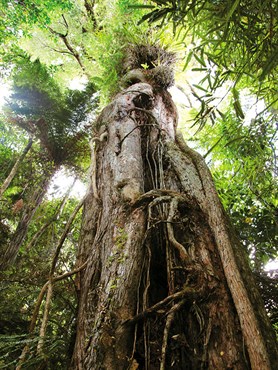
John and Mariata lead us along trails that they and a team of helpers carved out of thick bush. "It was a mission. We set ourselves small goals each day," she says. Initially they engaged a keen tramper, to help map the trails, but after a harrowing trek with this fellow, Mariata, who was formerly a tourist guide for DOC and Ngai Tahu in Canterbury, decided their tracks should be less arduous and needed to cater for all levels of fitness.
"A woman of 82 came on a tour and she did it no problem. She thought the water in the creek was better than wine – I couldn't get her out of it. The day's outing gave her a wonderful burst of life," says John.
Mariata adds, "She was part of a walking group from Tokoroa, who organised this as a secret destination. They all showed up in their chiffon tops, pearls, hair and makeup on, not very sensible shoes, handbags – they thought they were going on a garden tour. They loved it though."
We discover too that, thankfully, this is no quick hike through the forest, looking neither left nor right. Rather, it's a meandering exploration as Mariata and John explain the cultural, spiritual and botanical aspects of our surroundings.
We notice thick supple jack vines curling through the trees like Tarzan's rope. Mariata explains that supple jack once had many uses. "Being a strong, sturdy stalk it could carry weight so it was formed into hinaki or eel pots, wood-carrying baskets or kete.
Stabbed into ground and arched and with leaves and bark threaded through it, it became a shelter. It contains juice that you can drink, and if you cut off the tip it tastes rather like beans or asparagus. Now, who wants to try it?"
Intrigued, we all have a taste and Mariata's right, it does.
Happy ending
At one point, the track becomes so soft I feel as if I am walking on a sponge cake. These are the meshed tangle of fibrous roots of the tall, black tree fern or mamaku. "Dinosaurs used to like to eat the tops of these," says John.
Pausing by a shallow channel that crosses the path at a right angle, John explains, "This is a track once used by Maori to find their way. Before horses and the coming of settlers, Maori used to go from place to place along these tracks. We know it's very old because you have to pass between two totara trees that are now almost too tight to pass through."
Our wanderings finally lead us back to the gazebo in the clearing and it's time for lunch. Mariata has brought a plentiful supply of delicious picnic food, which we heartily tuck into.
After lunch we again disappear into the forest of peaceful green to be serenaded by the notes of kereru, tui, bush robins and warblers. Tranquility settles on our shoulders in a gentle, relaxed hush.
Travelling back down the mountain we are as satisfied as the tourists we met earlier in the day. We arrived not knowing what to expect and left filled with new impressions. Mariata put it perfectly when she said, "What you get from here you often don't recognise until you leave."
For more road trips, subscribe to Motorhomes, Caravans & Destinations magazine here.

